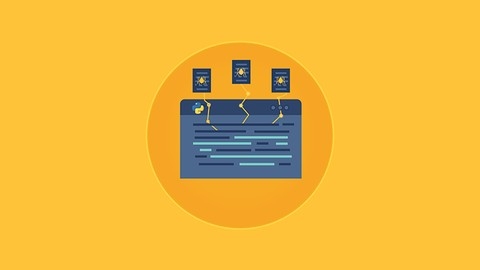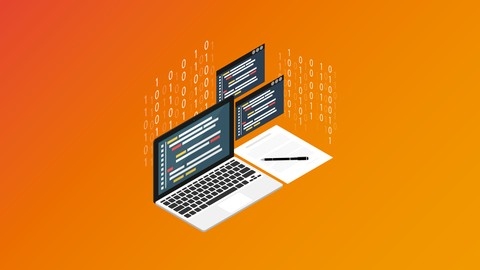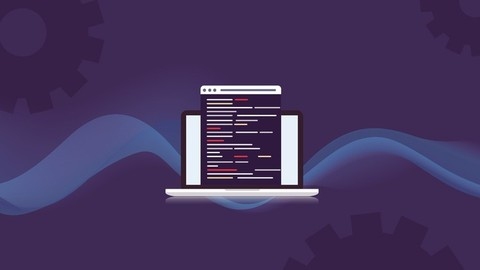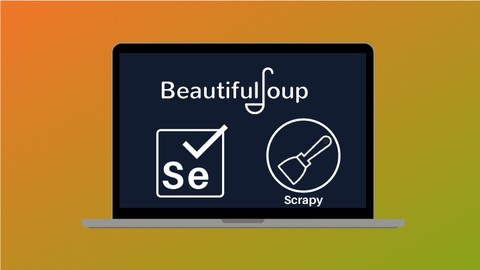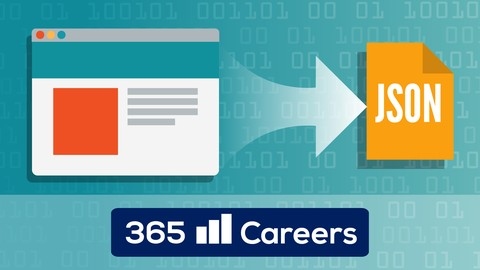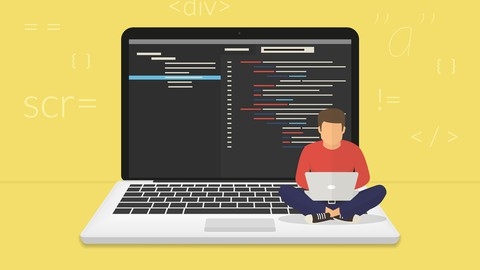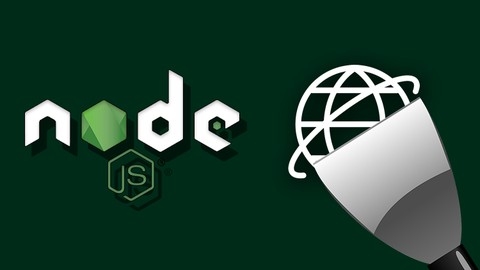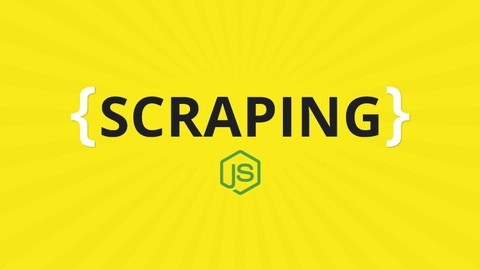Web scraping is the process of extracting data from websites, which can be incredibly useful for a variety of tasks, such as market research, price monitoring, and building datasets for machine learning projects.
Learning web scraping can open doors to exciting opportunities in data analysis, data science, and software development.
Finding a comprehensive and engaging web scraping course on Udemy can be a daunting task, with so many options available.
You’re looking for a course that goes beyond the basics, providing practical experience and hands-on projects to solidify your understanding.
We’ve reviewed countless courses and based on our analysis, Modern Web Scraping with Python using Scrapy Splash Selenium is the best course on Udemy overall.
This comprehensive course covers a wide range of topics, from the fundamentals of web scraping and setting up your Python environment to advanced techniques like scraping JavaScript-rendered websites, handling anti-scraping measures, and deploying your scrapers.
The course includes numerous real-world projects, allowing you to apply your knowledge in practical scenarios.
But if you’re looking for something more tailored to your specific needs, we have plenty of other options to explore.
Whether you’re a beginner or an experienced programmer, there’s a web scraping course on Udemy that’s perfect for you.
Keep reading for our full list of recommendations and find the perfect course to take your web scraping skills to the next level.
Modern Web Scraping with Python using Scrapy Splash Selenium
This course covers a comprehensive range of topics, taking you from the basics of web scraping and setting up the Python environment to advanced techniques like scraping JavaScript-rendered websites, handling anti-scraping measures, and deploying your scrapers.
You’ll start by learning the fundamentals of Scrapy, a powerful Python web scraping framework.
The course dives deep into XPath and CSS selectors, essential tools for extracting data from HTML pages.
It then walks you through building complete scrapers from scratch, teaching you how to handle pagination, spoof request headers, and build datasets.
But the real strength of this course lies in its coverage of scraping modern, JavaScript-heavy websites.
You’ll learn to use Splash, a lightweight browser rendering service, to scrape websites that rely on JavaScript.
Additionally, you’ll gain hands-on experience with Selenium, another popular tool for automating web browsers, to tackle even the most challenging scraping tasks.
It also covers important topics like debugging scrapers, working with pipelines to store data in databases like MongoDB and SQLite3, scraping APIs, logging into websites, and bypassing anti-scraping measures like Cloudflare.
You’ll even learn how to deploy your scrapers to platforms like Heroku.
Throughout the course, you’ll work on several real-world projects, giving you practical experience in tackling various scraping challenges.
The instructor provides source code for each project, allowing you to follow along and reinforce your understanding.
Web Scraping In Python: Master The Fundamentals
You’ll start by learning the prerequisites, including installing necessary libraries, understanding HTML structure, HTTP status codes, error handling, and the modulus operation.
The course then dives into static data extraction and web scraping.
You’ll learn how to make HTTP requests using the Requests library and parse HTML with BeautifulSoup.
Through hands-on exercises, you’ll practice scraping data from websites like Wikipedia, combining data from multiple sources, and handling exceptions.
Next, you’ll explore dynamic web scraping for websites that load data with JavaScript.
The course covers Selenium, a tool for automating web browsers, and teaches you how to extract data, deal with website loading times, and use headless drivers.
The syllabus also includes a section on APIs, an alternative way to retrieve data from the web.
You’ll learn the basics of APIs and how they differ from web scraping.
Throughout the course, you’ll work on practical exercises and quizzes to reinforce your understanding.
The lectures provide step-by-step guidance, sample solutions, and tips for searching and implementing code effectively.
Scrapy: Powerful Web Scraping & Crawling with Python
The course starts by comparing Scrapy with other Python scraping tools like Beautiful Soup and Selenium.
You’ll learn when to use Scrapy versus these alternatives based on your project requirements.
The instructor explains Scrapy’s asynchronous nature, which makes it highly efficient for scraping large websites.
You’ll go through installing Scrapy on different operating systems like Linux, Mac, and the trickier Windows setup.
The course covers setting up a Python editor like Sublime Text to write your Scrapy spiders.
The core content dives into building basic and advanced Scrapy spiders using XPath for data extraction.
You’ll learn best practices to avoid getting banned while scraping.
The course teaches deploying and scheduling Scrapy spiders on ScrapingHub, a cloud platform for running web crawlers.
Interestingly, you’ll learn techniques like logging into websites, running Scrapy as a standalone script, and building a full-fledged web crawler with Scrapy.
The course explores using Selenium with Scrapy for JavaScript-heavy websites and Splash for rendering JavaScript.
Several projects reinforce the concepts, including scraping Craigslist jobs, Class Central courses, an e-commerce site’s product prices via API requests, and the challenging task of scraping LinkedIn profiles.
The course covers exporting scraped data to CSV, JSON, XML, and databases like MySQL and MongoDB.
You’ll find lectures on advanced Scrapy topics like handling user agents, scraping tables and JSON data, and using Scrapy’s FormRequest.
Web Scraping in Python Selenium, Scrapy + ChatGPT Prize 2024
You’ll start with an introduction to Python and the different web scraping libraries like Beautiful Soup, Selenium, and Scrapy.
The course walks you through installing the necessary software and provides a handy web scraping cheat sheet to reference throughout.
From there, you’ll dive into Beautiful Soup, learning how to scrape single and multiple pages, handle pagination, and export data to text files.
The course also covers XPath, a powerful tool for navigating HTML documents.
Next up is Selenium, which allows you to automate web browsers and scrape JavaScript-driven websites.
You’ll learn how to identify these sites, install Selenium, find elements, click buttons, extract data from tables, and export to CSV files using Pandas.
There’s even a project where you build an Amazon Audible bot to scrape multiple pages.
The course then moves on to Scrapy, a high-performance web scraping framework.
You’ll install Scrapy, create your first project and spider, find elements, scrape links, handle pagination, and change user agents.
There are sections on building crawlers, exporting data to databases like MongoDB and SQLite, scraping APIs, and logging into websites.
But the real standout is the coverage of Splash, a lightweight browser for scraping JavaScript-rendered content.
You’ll set up Splash with Docker, learn how to find elements, and complete a project scraping a JavaScript website using Scrapy and Splash.
The course even shows you how to monetize your web scraping skills and use ChatGPT for web scraping tasks.
There are bonus sections on infinite scrolling, logging into websites like Twitter, and a Python data science bootcamp
Web Scraping and API Fundamentals in Python
The course starts with an introduction to web scraping, explaining what it is and discussing the ethical considerations involved.
You’ll then set up your Python environment using Anaconda and Jupyter Notebook, which will be your primary tools throughout the course.
Next, you’ll dive into working with APIs, a crucial skill for any web scraper.
You’ll learn about HTTP requests (GET and POST), JSON data format, and how to incorporate parameters into API calls.
The course covers several practical examples, including working with the Exchange Rates API, iTunes API, GitHub API for pagination, and the EDAMAM API for sending POST requests.
Moving on, you’ll get an overview of HTML, the backbone of the web.
You’ll learn about its structure, syntax, tags, attributes, and how it interacts with CSS and JavaScript.
Understanding HTML is essential for effective web scraping.
The course then introduces you to the powerful Beautiful Soup library for web scraping in Python.
You’ll learn the workflow of web scraping, setting up your first scraper, navigating the HTML tree, and extracting data from HTML tags.
Practical examples, such as dealing with links and scraping multiple pages, will solidify your understanding.
One of the highlights is a practical project where you’ll scrape data from Rotten Tomatoes, a popular movie review website.
You’ll extract movie titles, years, scores, cast information, and more, giving you hands-on experience with real-world web scraping challenges.
The syllabus also covers scraping HTML tables using Pandas, as well as additional practical projects involving scraping Steam and YouTube.
You’ll learn about common roadblocks in web scraping and how to overcome them.
Finally, you’ll explore the requests-html package, which allows you to scrape JavaScript-rendered content.
You’ll learn about CSS selectors and how to use them for more precise scraping.
Throughout the course, you’ll encounter quizzes and exercises to reinforce your learning and ensure you’re grasping the concepts.
By the end, you’ll have a solid foundation in web scraping and API fundamentals using Python.
Web Scraping in Python With BeautifulSoup and Selenium
The course starts by introducing web scraping and its applications, including how you can make money with it.
After installing Python and the required packages, you’ll dive into understanding how websites are displayed using HTML.
The course then covers the basics of BeautifulSoup, a Python library for parsing HTML, including working with tags, attributes, and navigable strings.
You’ll learn how to search and extract data from HTML using methods like find() and find_all().
The course includes several projects to reinforce your learning.
The first project focuses on scraping tables from websites, while the second project deals with scraping data from multiple pages.
You’ll also learn how to handle JavaScript-driven webpages using Selenium, a tool for automating web browsers.
The Selenium section covers using the web driver, XPath for navigating the HTML structure, finding elements, sending text inputs, clicking buttons, taking screenshots, scrolling, and handling wait times.
You’ll apply these concepts in a coding exercise scraping data from IMDb.
Later projects cover scraping infinite scrolling pages, like the Union Los Angeles website, and scraping data from Twitter.
You’ll even learn how to automate Python scripts and send emails through Python.
Throughout the course, you’ll work with real-world examples involving websites like NFL, Twitter, and Indeed.
The instructor provides coding exercises and quizzes to test your understanding.
Web Scraping with Python: BeautifulSoup, Requests & Selenium
The course starts by explaining what web scraping is and why it’s useful for extracting data from websites.
The instructor will teach you how to access webpages programmatically using Python.
One of the key libraries you’ll learn is Beautiful Soup, a Python parser for parsing HTML webpages.
You’ll understand how to navigate and search the HTML parse tree created by Beautiful Soup to extract the data you need.
The course covers navigating the tree by going down to children/descendants, up to parents/ancestors, and sideways to siblings.
Regular expressions are also covered, which are useful for pattern matching and data extraction.
You’ll learn about metacharacters, character classes, and other regex concepts.
The course introduces Selenium, a tool for automating web browsers.
This is important for scraping JavaScript-driven websites where the page content is loaded dynamically.
You’ll learn how to use Selenium to interact with webpages, input data, click elements, and more.
Several projects are included to apply what you’ve learned, like scraping data from consumerreports.org, codingbat.com, and even your own Instagram account.
Scraping best practices are discussed as well.
You’ll also be able to extract data efficiently from various websites while handling JavaScript and AJAX.
Web Scraping in Nodejs & JavaScript
This course goes from the basics of CSS selectors and scraping tools to advanced techniques like scraping infinite scrolling pages and handling authentication.
You’ll start by learning how to select elements using CSS selectors and Chrome Developer Tools, building your first scraper in just a few lectures.
The course then dives into scraping HTML tables with Cheerio and Request, as well as scraping pagination sites using Axios.
One of the highlights is the project on scraping Craigslist using Puppeteer, where you’ll learn to handle challenges like avoiding getting banned and scraping job descriptions across multiple pages.
You’ll also get hands-on experience scraping popular sites like Nordstrom, IMDb, and AirBnb, using tools like Puppeteer, NightmareJS, and regular expressions.
It covers important topics like handling network problems, parsing robots.txt, exporting results to CSV, and even building a web scraper using Test-Driven Development (TDD) principles.
If you ever get blocked while scraping, the course provides valuable insights on using proxies and scraping APIs as alternatives.
You’ll also learn how to design an architecture with a web scraper and an API, as well as saving scraping data to MongoDB.
Deployment is a crucial aspect, and the course covers deploying periodic scrapers to Heroku and Google Cloud Platform.
There’s even a section on deploying Puppeteer scrapers to Heroku using buildpacks.
Additionally, you’ll get a bonus introduction to GraphQL and learn a secret backdoor to scrape Facebook without JavaScript enabled.
The course wraps up with a student Q&A section, providing tips and tricks from real-world scenarios.
Modern Web Scraping Fundamentals with Python
You’ll start with an overview of web scraping and get acquainted with your instructor.
The course covers essential concepts like HTTP requests, websites, and the DOM (Document Object Model).
You’ll learn how to use tools like Sublime Text and browser inspectors to analyze web pages.
The first practical section dives into Scrapy, a powerful Python library for web scraping.
You’ll learn to set up a Scrapy project, build spiders, and use selectors to extract data.
The course also covers Scrapy items, requests, responses, and traversing options.
A hands-on challenge reinforces your learning.
Next, you’ll explore BeautifulSoup, another popular Python library for web scraping.
You’ll learn how to install and use BeautifulSoup with requests to parse HTML and XML documents.
Another challenge helps solidify your understanding.
The course then introduces Selenium, a tool for automating web browsers.
You’ll learn how to install and use Selenium with Python, including techniques like clicking elements and handling logins.
A comprehensive challenge integrates Selenium with BeautifulSoup for advanced scraping tasks.
The main course culminates with a final challenge that tests your skills across multiple libraries and concepts.
You’ll receive guidance and solutions to ensure you master the material.
Additionally, the course includes extra lectures on topics like using Droplet, comparing Scrapy and BeautifulSoup, and starting your first Scrapy project.
You’ll also find a bonus lecture on unlocking top salaries in the field.
Throughout the course, you’ll work with essential tools and libraries like Anaconda, Robots.txt, URLs, Python, GitHub, Selenium, BeautifulSoup (BS), and Sublime Text.
The course is designed to be hands-on, with challenges and quizzes to reinforce your learning.
Learn Web Scraping with NodeJs - The Crash Course
This course covers various web scraping techniques and libraries, making it an excellent choice for anyone interested in this field.
It starts with an introduction, setting the stage for what’s to come.
It then dives into the tools and project setup, ensuring you have the necessary environment ready.
The first hands-on project involves writing a simple IMDB scraper, allowing you to grasp the basics.
As you progress, the course delves into more advanced concepts.
You’ll learn about the “why” and “when” of web scraping, helping you make informed decisions.
Additionally, it addresses the common “problem” associated with scraping, equipping you with the knowledge to navigate potential challenges.
The course covers two primary methods for web scraping: the Request method and the Browser Automation method.
With the Request method, you’ll learn how to spoof headers, handle GZIP compression, parse data using selectors, export data to CSV and JSON formats, download images locally, and even promisify callback functions.
Moving on to the Browser Automation method, the course introduces Puppeteer, a powerful library from Google.
You’ll learn how to install and test Puppeteer, write automated tasks, generate PDFs, emulate phone views, and retrieve page titles and URLs.
The course also covers advanced topics like logging into websites (e.g., Instagram), using proxies, ignoring SSL errors, and exposing custom functions.
To solidify your understanding, the course includes practical projects like building a Twitter scraper with Puppeteer, scraping Amazon product details, and working with the NightmareJs library.
These hands-on projects will help you apply the concepts you’ve learned in real-world scenarios.
